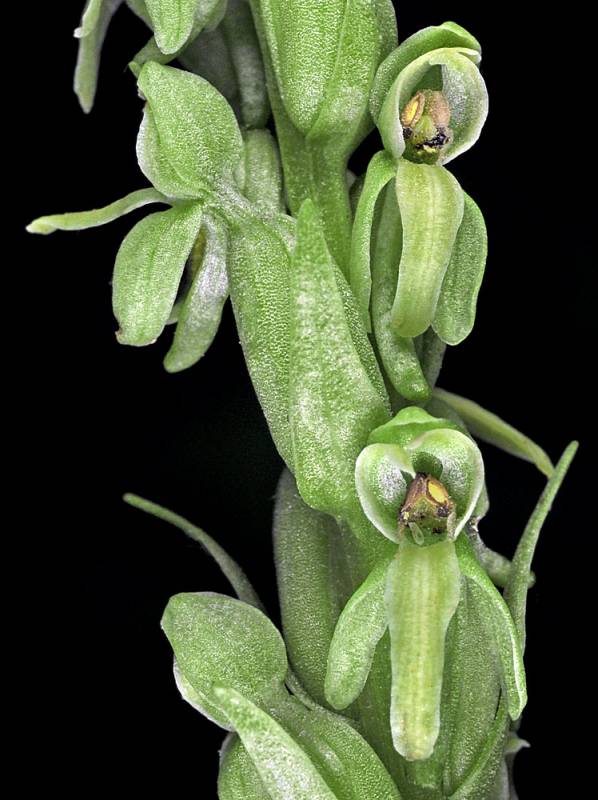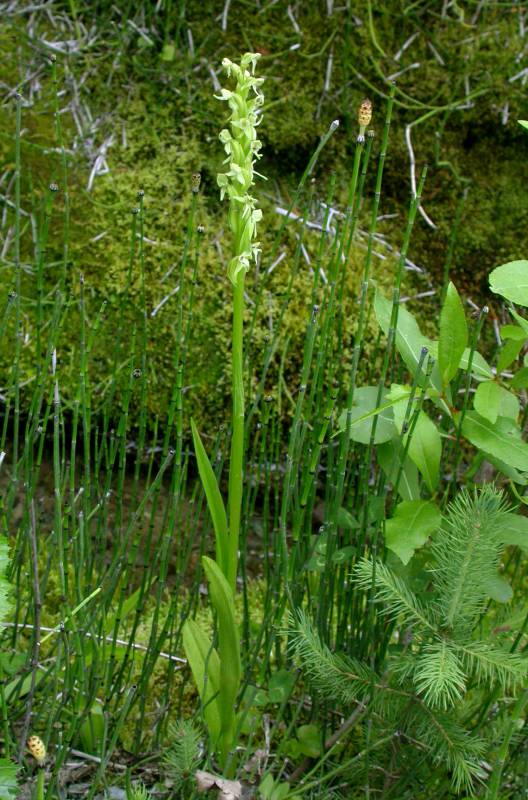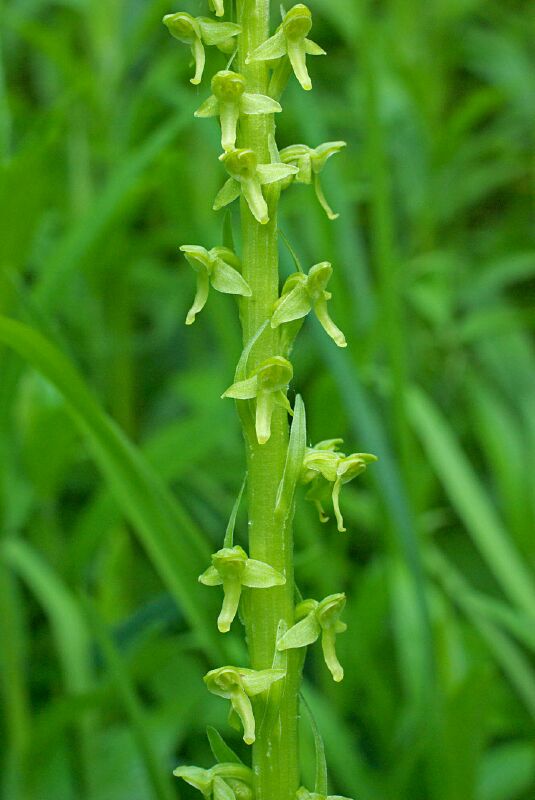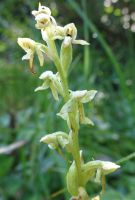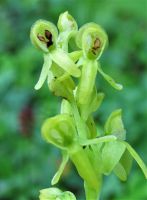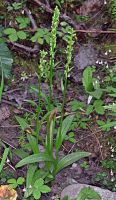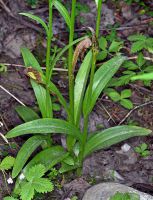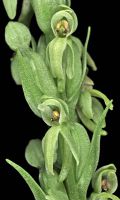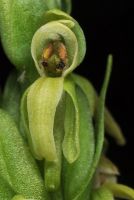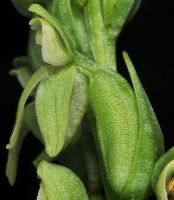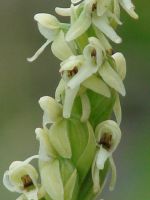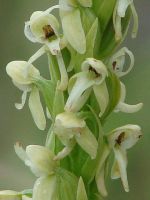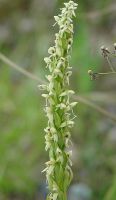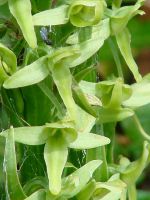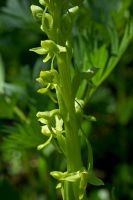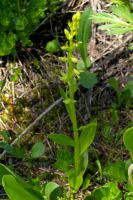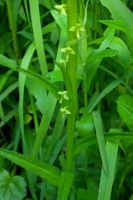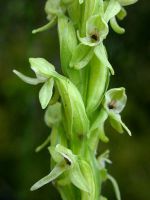Distribution: Occurring chiefly east of the Cascades crest in Washington; Alaska to Oregon, east to the Rocky Mountains; also from north-central to northeastern North America.
Habitat: Moist to boggy areas, often on limestone, low to mid-elevations.
Flowers: June-August
Origin: Native
Growth Duration: Perennial
Conservation Status: Review Group 1 in Washington (WANHP)
Pollination: Self-pollination, flies
Glabrous perennial 2-10 dm. tall.
Leaves alternate, several, mostly on the lower half of the stem, sheathing, narrowly oblong-elliptic, 6-20 cm. long and 1-3 cm. broad, blunt to acute.
Inflorescence a densely-flowered, spike-like raceme 5-15 cm. long, the lower bracts 2-3 times as long as the flowers, the upper shorter than them; flowers pale to deep green, often purple tinged or veined; upper sepal ovate-elliptic to sub-orbicular, rounded, 4-7 mm. long, 3-nerved, forming a distinct hood; lower sepals 3-nerved, spreading, ovate-lanceolate, 4-7 mm. long; petals about equal to the sepals; lip narrowly lanceolate, fleshy, 4-7 mm. long; spur cylindric, usually somewhat curved, from much shorter to barely longer than the lip; stamens and style fused to form a column about half as long as the upper sepal.
Publication: Gen. Sp. Orchid. Pl. 288. 1835.
Limnorchis media Rydb.
Orchis huronensis Nutt.
Platanthera hyperborea (L.) Lindl., misapplied [FNA26, JPM]
Platanthera ×media (Rydb.) Luer
PNW Herbaria: Specimen records of Platanthera huronensis in the Consortium of Pacific Northwest Herbaria database
WA Flora Checklist: Platanthera huronensis checklist entry
OregonFlora: Platanthera huronensis information
E-Flora BC: Platanthera huronensis atlas page
CalPhotos: Platanthera huronensis photos

